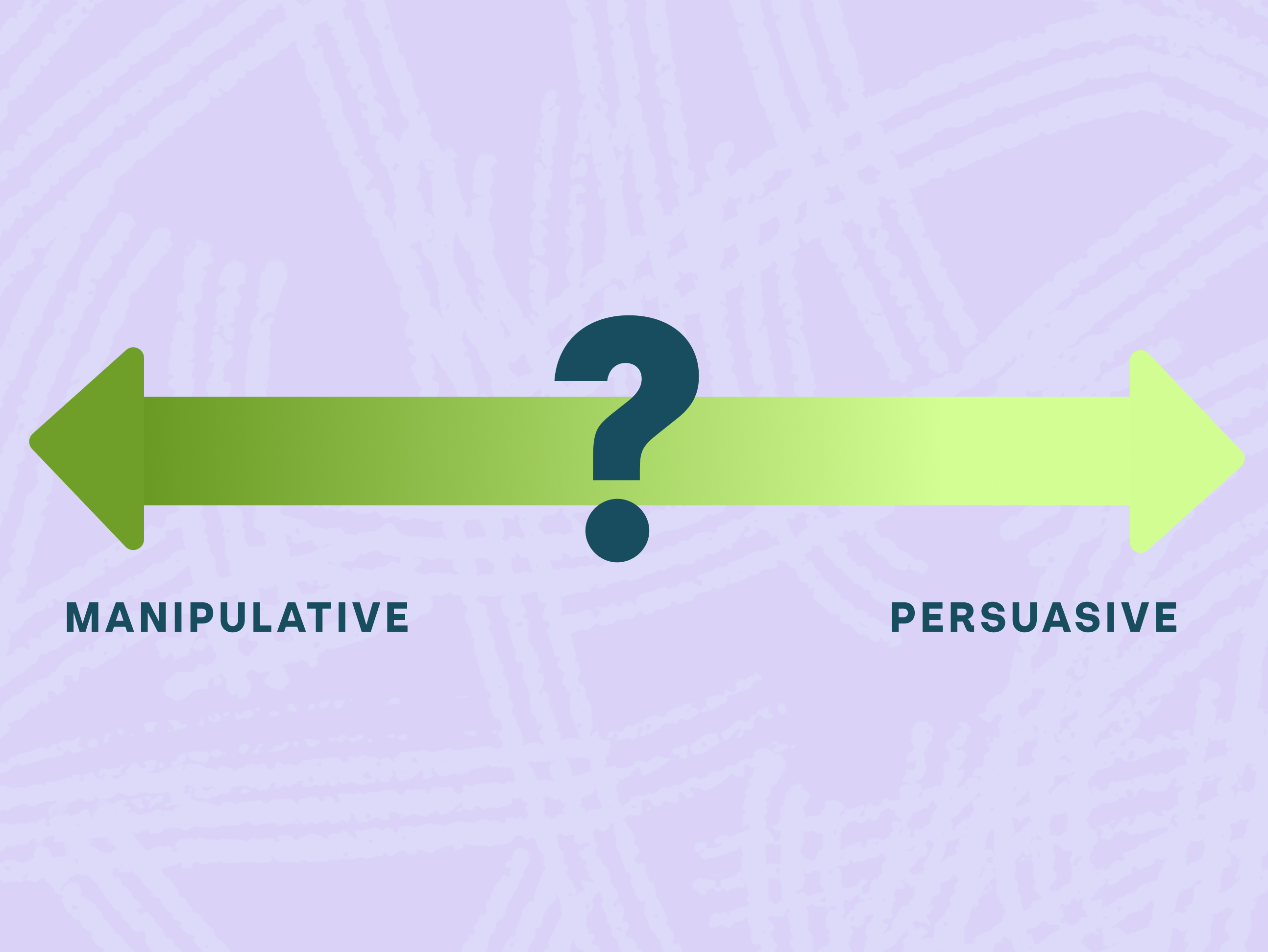How to Prove the Value of User Experience (UX) and Get Buy-in

You’ve decided it's time to expand your UX practice.
You’ve laid out the next steps for a new research or design initiative, written that new job description to attract an amazing new UXer to your team, or maybe you just know it is time for a more customer-centric approach within your product practice. Now it’s time to make your case to the executive team and get approval. Deep breath…
As a UX professional, you know the value of your work and how it produces results. Does everyone else? We work with decision makers all the time from startups to large healthcare systems that struggle to understand the value that UX and a human-centric mindset brings. You probably work with those same types of decision makers. And when that is the case, our UX work is only impactful if we’re able to effectively communicate the value.
In order to get the sign-offs we need to make our big plans come true, we must know how to effectively communicate what UX really is and its true value to get buy-in from leadership.
Let's change the conversation from "why do we need this?" to "how soon can we do this?"
What is User Experience (UX) and Why the Misunderstanding?
The term “user experience” has been widely misused since it was first coined in the early 1990’s by cognitive psychologist and designer Don Norman during his time at Apple Computer. Some people use the term to simply explain the interaction between a user and a product. While this is true, it is so much more than that.
What is the Definition of UX?
Let’s remove some of the confusion around what user experience is. Nielsen Norman Group (NN/g) summarizes user experience as “[UX] encompasses all aspects of the end-user's interaction with the company, its services, and its products.” This surface level definition is pretty vague and adds to the misunderstanding. One component alone, UX design, covers various disciplines including interaction design, visual design, information architecture, usability, function, and much more.
NN/g does go into a bit more detail explaining how user experience is more of an ecosystem involving the customer and the entire organization rather than simply checking off features that may be viewed as best practice. “The first requirement for an exemplary user experience is to meet the exact needs of the user, without fuss or bother”.

Meet the exact needs of the user–got it. But how do we get there?
One of the most important steps is having a culture of user-centricity throughout the entire organization, from customer service to operations, marketing, sales, and product. After all, how are you going to create an experience that meets "the exact needs of the user" if they aren’t the focus and part of the process?
The practice of UX is a strategic lens that brings into focus and aligns business goals and aspirations to user needs and expectations—thus defining a clear path to success.
As product and UX leaders, we should be the ones within the organization that are advocating for the user and shouting it from the mountain top (or the conference room). Since we have the greatest impact, we are the ones who have to carry that burden.
So, why the Misunderstanding Among Executives?
User experience is a large, multidisciplinary field that includes research, design, strategy, branding, and more. Within each one of these disciplines are countless nuances, methods, tools - the spider web continues to grow. To say UX is complex would be an understatement.
It takes years of education and experience to fully understand UX and the different disciplines. And most CEOs or CFOs, for example, do not come from a UX or design background. Sure, they may want to better understand it but let’s face it, they do not have the time. Even if they did, they’re focused on different aspects of the business, anyway. We’ve encountered healthcare executives who claim that a good user experience is unnecessary when there’s currently no competition, or users have gotten familiar enough with the current experience to work around its pitfalls. This is short-sighted thinking at best. Without considering user experience, you won't acquire or retain the users you need to achieve your business goals.
So, when you advocate for this grand UX initiative and the steps involved, non-UXers may not connect the dots on how exactly it is going to improve user experience - and ultimately, grow the business. And that’s okay! It’s okay that they do not fully understand the complexities of UX—they don’t need to. We just need them to see the value an amazing user experience brings.
We can do this by helping them understand what UX is in somewhat simple terms, and tie our case to the business objectives and outcomes they care about.
Take this from Charlie Claxton who has led design efforts for companies like Amazon, Boeing, Expedia, and Microsoft: “Every dollar invested in UX yields a return between $2 and $100.” He goes on to say,
"[Retailers] understand that UX design is an important, valuable business tool that delivers specific, quantifiable return on investment. They don’t need to be reminded that you hire UX design experts to improve your bottom line, not simply to make things pretty."

How to Communicate the Value of UX
UX designers and product teams often have their own behavioral and attitudinal metrics when it comes to digital products, such as:
- Task success and time
- User error rate
- Abandonment rate
- Customer satisfaction (CSAT)
- Appearance
These are great metrics for user experience but they are not the ones that a busy executive looks at. They are more interested in numbers that show the potential value and return on what they are about to invest in, i.e your new UX initiative.
This means we must build our case from a business perspective. After all, a focus of UX is to find the synergies between business goals and user needs.
Align what you influence through UX with business goals. For example, a better user experience can lead to a higher Net Promoter Score (NPS), which means there are more advocates for your brand in the world and customers are more loyal. Boil that down and we’re talking about an increase in customer acquisition, more repeat purchases or engagement, and possibly more revenue.
Some additional metrics where UX and a user-centric mindset can have a positive business impact:
- Customer retention
- Brand loyalty
- Product adoption rate
- Sales
- Conversion rates
- Improvement of internal time and resources
Armed with these metrics and a new perspective, we now have the full attention of the executive team.

Make an Offer They Can't Refuse
Let’s not overthink this. We know what the executive team cares about and how it is fundamentally tied to customer-centricity and UX.
1. Make a plan.
Do your homework and prepare with your audience in mind. Do they prefer pretty, easily digestible executive summary style reports or more in-depth, long-form reports?
2. Come with supporting evidence.
Leverage your own experiences and data at your disposal. Have relevant quantitative and qualitative data? Bring it. There are plenty of research studies that demonstrate the ROI of UX as well. Find some that support your argument. Here are some to get you started:
- This report from Bain & Company’s ”Closing the Delivery Gap” found that 80% of companies felt they delivered great experiences to their customers, but only 8% of customers agreed with this.
- Or this gem from Forrester Research’s report ”Rich Internet Applications Errors To Avoid”, which showed that 70% of projects fail due to lack of user acceptance.
3. Tie it to business objectives.
Use your well thought out plan, supporting evidence, and tie it to what matters to the company. And remember, you’re not alone. Bring backup. Sales and marketing surely see the benefits of UX, so keep them in your corner.

Seeing the Next Hurdle
The next hurdle you’ll have to overcome once you convince leaders that UX improvement is needed, is the mistake of prioritizing execution over understanding. We often see leaders who want to do things quickly, so they preach speed and condense project timelines. This leads to hundreds of hours and tens of thousands of dollars being spent on rebuilding a product over and over again. However, that’s a story for a different day with a lot to unpack. Sign up for our newsletter so you don’t miss it!
If you need help building your case, improving your team’s processes, or scaling UX capacity, reach out to us. We work with companies big and small to harness the power of design to empower people, reimagine futures, and bring bold visions to life.
Check out our Ultimate Guide to UX Research & Product Design Services
Looking for insights for healthtech product leaders, delivered to your inbox every few weeks? Sign up for our newsletter.
Currently exploring
UX Mastery



.svg)
.svg)
.svg)
.svg)
.svg)
.png)


.svg)

